Keywords
Patient satisfaction, hospital, nursing care, assessment
Introduction
During the last decades the increasingly rising cost of medical services and the need for better evaluation of available resources, preoccupy all the developed countries. [1] Therefore, the need for measuring health-care effectiveness is more than obvious in order to assess the utilisation of available resources.
Patients’ satisfaction constitutes a significant indicator of the health care quality. [2,3] Donabedian, a long time ago, attributed patients’ satisfaction a totally separate dimension, considering that the final quality confirmation is not only defined by the effectiveness of medical care, that is the desirable health level, but from the patient’s satisfaction as well, which consists an integral part and recognizable indicator of the quality of health care provided. [4] Besides assessing the provided services, there are other reasons that enforce the measuring of patient satisfaction. Many researchers consider patient satisfaction as the purpose of health care which inevitably affects other purposes and results, as an important source of information for the qualitative improvement of care, as a therapeutic intervention contributing in self therapy, while others suggest that measuring it can be successfully used in personnel administration as well as promoting medical services, after carefully studying the market conditions. [5]
Years earlier, Vuori questioned the validity of patient satisfaction measurements and came to the conclusion that: (a) patients do not acquire the scientific and technical knowledge to evaluate the quality of care, (b) patients’ physical and psychological situation may be such which does not allow them to express objective views, (c) the rapid rotation of interventions, diagnostic tests and measurements does not allow patients to possess a rounded and objective picture of what is happening, (d) professionals and patients may have different targets and (e) the sense of quality depends on cultural habits hence varies from one country to another. [6]
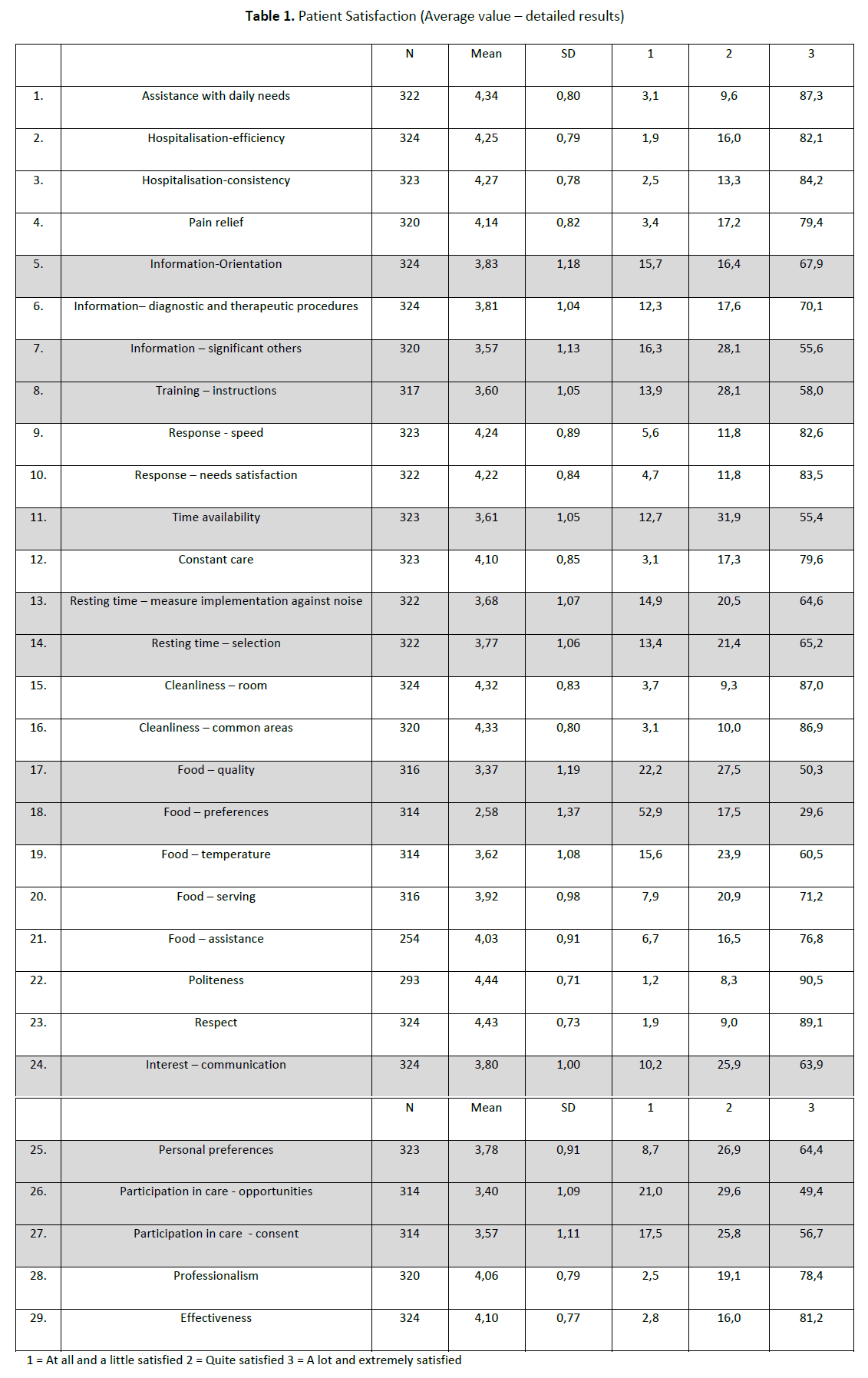
It is true that patients may have some difficulty in truthfully putting down their views for the provided services and that reduces the validity of measurements. Nevertheless, satisfaction is a subjective concept for the patient and professionals have to accept its existence, regardless of the validity of the patients’ views. The patients’ feelings are what matters even if the staffs’ perception is different, since patient satisfaction evaluation is connected with their behaviour and can be used to improve nursing services. [7,8]
Paraphrasing Peter Senge’s definition of quality, which is “whatever concerns the consumer”, we could say that in the health department, quality refers to “whatever concerns the patient”. [9] In the future, successful hospitals would be considered those which will include the patients’ opinion in the evaluation system of the quality of the provided services and will take it under serious consideration during the taking of all the administrative and financial decisions process. [10]
Patients’ satisfaction with nursing services is particularly important since the nursing staff consist the majority of health professionals and is constantly by the patients’ side in order to satisfy their needs, constituting this way an unquestionably overbearing component in maintaining and restoring their health. The literature shows that researchers agree on the significance of nursing interventions in shaping the patients’ total satisfaction with the nursing services. [11,12]
The first efforts to assess patients’ satisfaction with health services started from the nursing department, in 1957, in America. [13] Nowadays, in developed countries like America and Great Britain, measuring patient satisfaction is legally established and constitutes a precondition for the accreditation of hospitals. [14]
Patient satisfaction has been defined as ‘the patient’s opinion of the care received from nursing staff’ [15], which is similar to Donabedian’s declaration of patient satisfaction as “an expression of patient’s judgment on the quality of care in all its aspects, but particularly as concerns the interpersonal process’. [4] Most recently, Mrayyan [16], following the model of Oberst [17], gave an operational definition of patient satisfaction as “the degree to which nursing care meets patients’ expectation in terms of art of care, technical quality, physical environment, availability and continuity of care, and the efficacy/outcomes of care.
This study intends to assess patient satisfaction in medical and surgical departments of public hospitals in Cyprus as well as exploring any possible correlation with background factors.
Methods
An exploratory, descriptive design with a semi-structured face-to-face interview was employed. Τhe study protocol was submitted for evaluation and was approved by the Ethics committee of the Ministry of Health. Αccess to the hospitals was allowed by each hospital’s administration board.
The sample was comprised of 159 medical (49.1%) and 165 surgical patients (50.9%), a total of 324 patients, out of the 5 public hospitals in Cyprus. Patients were randomly chosen and there were about 30% of the patients from each department, with 5 patients per department as a limit. The patients had to meet the selection criteria (over 17 years of age, 3 days of hospitalisation as a minimum, a satisfactory level of awareness, a stable emotional state (as decided by the nurse and the physician in charge of each department) and an orally informed consent for participating in the research).
The data were collected by using MPSS which has been positively evaluated for its psychometric properties in the Greek population. [12,18] Content validity has been based on extensive literature review of quantitative and qualitative data, input of patients, open semi-structured interviews and a panel of experts and the critique of questionnaire items provided by a random sample of patients and construct validity was realised by an exploratory factor analysis with all the factors explaining 68,8% of the variability. [18] . In two studies, Cronbach alpha has been found to range from 0,79 to 0,94 for the subscales. [12,18]
MPSS questionnaire includes 29 questions which cover the following areas: a) the technical aspect of care (N=9), b) the information given to and education of both the patient and their relatives (N=4), c) the interpersonal relationships and time availability (N=7) and d) the environment and more specifically, the resting time, cleanliness and food provided (N=9). In every question there are two parts, a brief neutral style description of nursing intervention (stem) and a detailed explanation. To facilitate the patients, a special visual depiction of the question with large letters was used, presenting the five possible numerical choices and their meaning. Additionally, there were two more questions concerning re-hospitalization intention and staff recommendation to others in order to check the validity of the questionnaire.
The interviews were realised by 6 students-researchers after undertaking the relevant training. The procedure was as follows: the researcher contacted with the head of each department and after informing them on the purpose of the research and the process that had to be followed, they asked them to hand in the room number of the patients fulfilling the criteria for participating in the research. Interview planning was next. If there was a patient about to get discharged, they got first in line. During the interview, a briefing on the research took place first; several areas of nursing care were mentioned next as well as a brief explanation for each area without however, any further clarifications, in order to ensure the credibility of the measurement. The average time required for the completion of the interviews was 15 minutes, with minimum time 8 minutes and maximum time 20 minutes. The total amount of time spent was much greater since it included the planning of interviews as well as the waiting time in case the patient was not available at any given time.
The correlation of the total average score with the final question for total satisfaction (r=0.67, P<0. 001) as well as with the two questions for the intention for re-hospitalization in the same department (r=0.63, P<0.001) and for the recommendation of its staff to other patients (r=0.65, P<0.001) provide some evidence of validity. The internal consistency reliability, as measured by Cronbach’s alpha) ranged from 0.90 for the technical aspect of care to 0.86 for hospitalisation infrastructure. Parametric tests: T-test, Anova and Pearson correlation coefficient, as well as Chi square and the respective non-parametric tests ware applied to process the statistical analysis.
Results
Description of the sample
The majority of patients under study were men (61.7%) and the mean age was 57.7 years of age (SD=17.9 years). The educational level of the patients was relatively low, since only 6 out of 10 patients had extra educational training (Picture 1). About two out of three patients (61.4%) described their health condition as either serious or very serious while about three out of four patients (76.5%) declared that they are either well or extremely well aware of their health condition (Picture 2-3). The effectiveness of public hospitals in Cyprus was judged as good by the 73.1% of patients and as very good by the 21.6% (Picture 4).

Picture 1: Educational Level (Years of education, %)

Picture 2: Severity or the disease (self-evaluation)
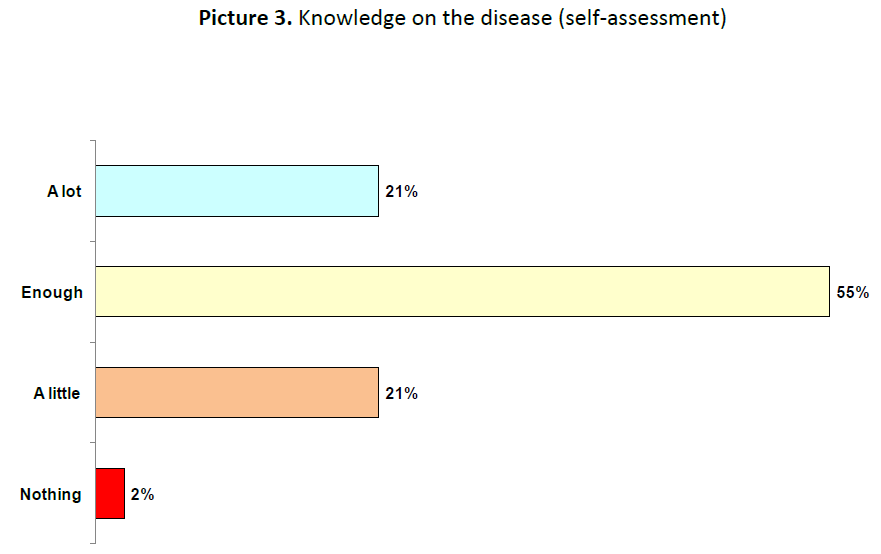
Picture 3: Knowledge on the disease (self-assessment)
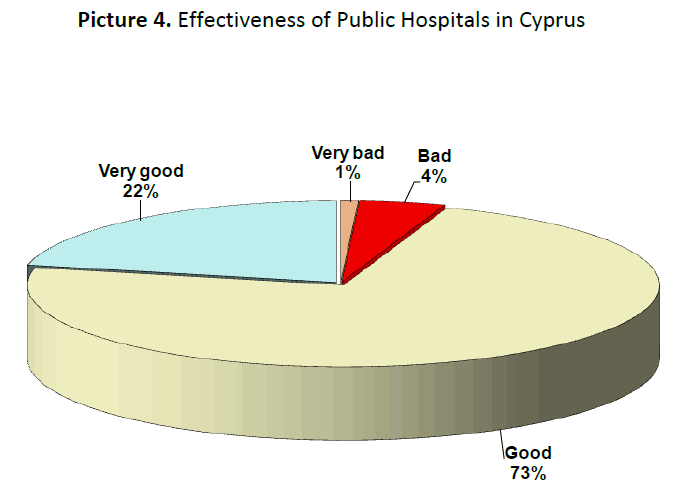
Picture 4: Effectiveness of Public Hospitals in Cyprus
Descriptives
The total patient satisfaction was quite high (Mean=3.90, SD=0.63, R=1-5). The technical aspect of care satisfied patients the most (Mean=4.20, SD=0.62) whereas the hospitalisation services, particularly food (Mean=3.47, SD=0.86), resting time (Mean=3.72, SD=0.95) and information provision (Mean=3.71, SD=0.92) satisfied them the least. Picture 5 shows in detail the satisfaction and differences according to the area of nursing care. It is clearly demonstrated that patients are less satisfied with the information they had (especially with the information for the orientation process and the provision of information to significant others), the training process and the instruction they received, the resting time, the time nurses spent with them and finally with their participation in care.
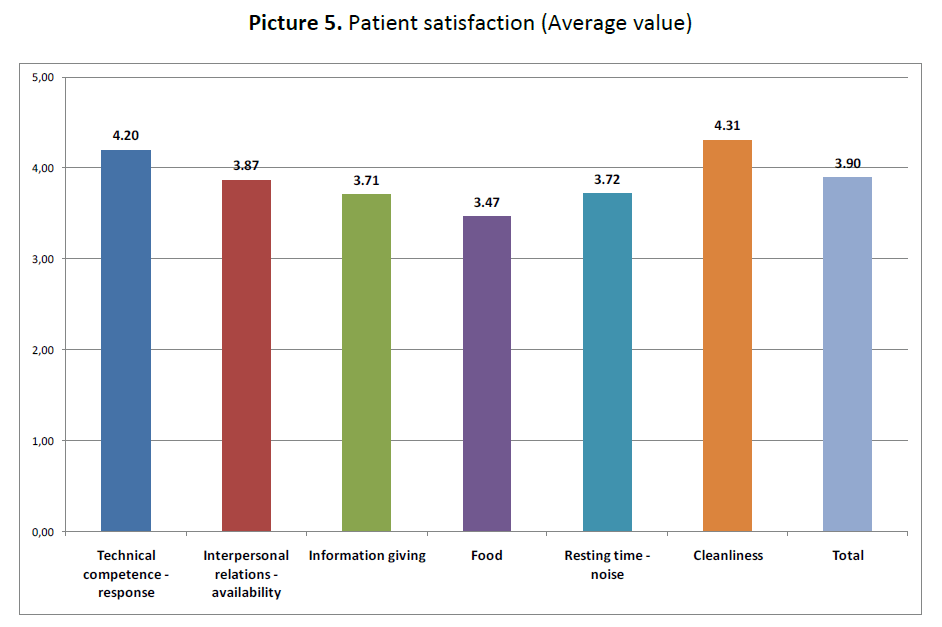
Picture 5: Patient satisfaction (Average value)
Differential statistics
Surgical patients were more satisfied than medical patients (Mean= 3.94 vs 3.86), the difference however, was so minor that it was considered statistically insignificant (Picture 6). A statistically significant difference was found only in the area of information with the surgical patients to be more satisfied (Mean= 3.79 vs 3.63, P<0.05).
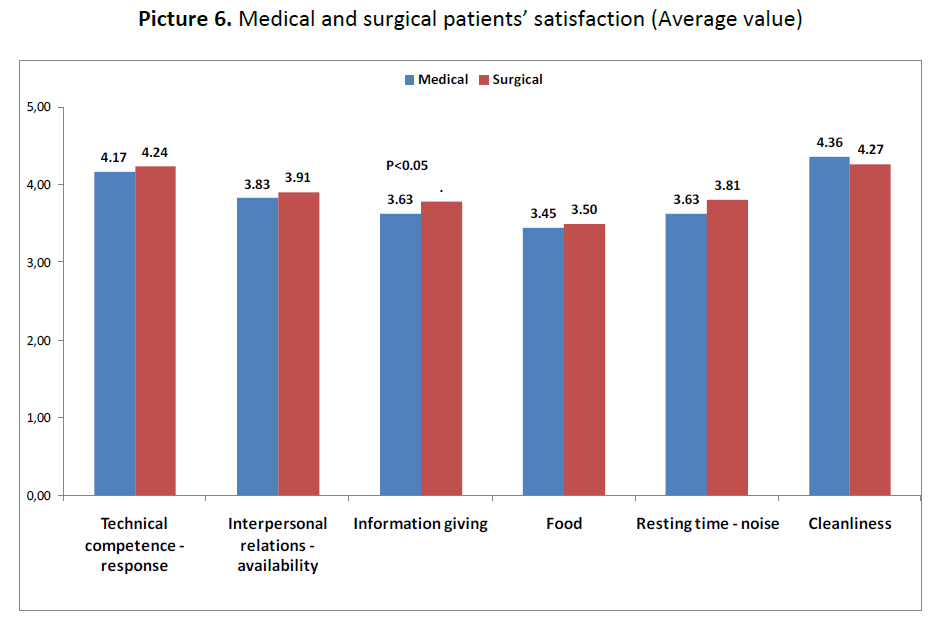
Picture 6: Medical and surgical patients’ satisfaction (Average value)
Significant differences were also observed between hospitals (Picture 7) and this is an indication of content validity. As far as the residence is concerned, there was a minor difference between patients living in urban and other areas, since the former were less satisfied with the hotel services and mainly the food (Mean= 3.36 vs 3.62, P=0.007). Age and sex were not related with patient satisfaction.

Picture 7: Patient satisfaction per hospital (Average value)
Discussion
The results of the study showed that patients were overall satisfied with nursing care and they were mostly satisfied with the technical aspect of care and less with hotel services and information and that seem to be in accordance with the literature. Additionally, significant differences were found between hospitals regarding the hotel services and surgical patients were more satisfied with the information given.
Many researchers have found high satisfaction with the technical aspect of nursing care. [12,19,20] Patient satisfaction with the technical aspect of nursing care was highly ranked and that can be partly attributed to the great emphasis given by the working system to the technical aspect of care. Evidence of satisfaction with the technical care and less with the information received is also reported in several European studies. [21,22] The implementation of the mechanistic working model leaves nurses with no room to develop an interpersonal aspect of care or to exhibit their contribution. This however, is likely to be attributed to the lack of specialised knowledge or to the patients’ fear due to their dependence on the hospital personnel.
Obserst [17] supports, that the average patient does not possess the experience or the necessary knowledge to assess the technical aspect of medical and nursing interventions. As a result, they can use representative data easily comprehended by the patient, in order to assess the quality of the services provided in hospitals. These data usually concern the satisfaction of the basic biological needs which are better comprehended by the patient. Leebov [23] mentions a totally different opinion: patients pass judgment on the technical and medical abilities of an organization by its natural environment and the facilities available, in order to pose the following question: if the television is out of service, then why should the scanner be reliable? Nowadays, in most hospitals, nutrition, cleanliness as well as noise, are not the sole responsibility of nurses but mainly of the administration under which all the employees come under. Nurses are, however, professionally responsible for maintaining the areas clean, supervising the quality of the food as well as noise levels. The results of a similar research, have indeed confirmed all of the above, since patients did not seem to be satisfied enough with the noise restriction, the food quality or options availability. [12]
Additionally, many articles appear patients to be less satisfied with the information provided both during their orientation to the department, as well as to their significant others. [12,20] This however, comes in juxtaposition to the nurses’ belief, who think that patients are actually satisfied and do not wish to receive any more information. [24] Participation in care is another parameter that is closely related to the provision of information. Indeed, patients expressed low satisfaction with the opportunities given to them for their participation in care. Nurses should be made more sensitive and aware of the importance of patients’ information and autonomy as well as their rights in general. The time that nurses devote to their patients is another area where the latter showed their dissatisfaction. This, however, can be attributed to the work load that nurses have to deal with daily. On the other hand, the following question could arise: is just the lack of personnel the reason why nurses do not get closer to their patients?
The fact that surgical patients were more satisfied with information given can be possibly explained probably by the nature of the disease and the relationship between patient and doctor. Patients who are admitted for a scheduled operation had more time to learn more about their problem or they have possibly been informed by their doctors beforehand and they have prepared themselves. It is also interesting to note that patients with adequate information become more involved in their own care and their subsequent participation in care leads to greater patient satisfaction. [22,25]
According to other research findings, food and resting time are also areas that need interventions. [26,27] An effort should be made to improve hotel services and more specifically, food, where more dietary options should be given, as well as some measure taking for restricting the noise.
For the correlation of background factors with patient satisfaction with nursing care the literature shows contradictory findings. [12] This study did not reveal any correlation with demographics but there is a need for others studies in Cyprus to be conducted in order to confirm this finding. The differences found between hospitals depict the fact that hospitals in rural areas were newer. An interesting finding of this study was the patients in hospitals of smaller cities were more satisfied than those in the large urban areas, supporting previous evidence in the USA and Canada with rural patients reporting better care than urban patients. [28,29] One potentially important factor of satisfaction is the location of the provider suggesting that where people reside can have some impact on their perceptions of care. One explanation could be that patients in large communities may have different expectations because they have a choice. This finding could also be explained by the fact that in small communities people may develop close social connections to their workers of their local hospital or that healthcare workers are well known members of the small community and are trying to do their best for their community. [29] Practically, we could also conclude that in these areas the hospitals have recently being builded or renovated and people do not have to travel long distances to get to a hospital anymore.
Conclusions
Based on the results it is suggested that nurses should be made more sensitive and aware of the importance of patients’ information and autonomy as well as their rights in general. Additionally, an effort should be made to improve hospitalisation services and more specifically, food, where more dietary options should be given, as well as some measure taking for restricting the noise.
Finally, it is clear that evaluating patients’ satisfaction should be constant so as to reformulate the baseline and to be able to assess interventions and changes in nursing care provision..
3075
References
- Merkouris A, Ifantopoulos J, Lanara V, Lemonidou C. Patient satisfaction: a key concept for evaluating and improving nursing services. J Nurs Manag. 1999; 7(1):19-28.
- Johansson P, Oleni M, Fridlund B. Patient satisfaction with nursing care in the context of health care: a literature study. Scand J Caring Sci. 2002; 16(4):337-44.
- Laschinger HS, Hall LM, Pedersen C, Almost J. A psychometric analysis of the patient satisfaction with nursing care quality questionnaire: an actionable approach to measuring patient satisfaction. J Nurs Care Qual. 2005; 20(3):220-30.
- Donabedian A. Explorations in quality assessment and monitoring, National Center for Health Services Research. Health Administration Press, Mich, 1980.
- Vuori H. Patient satisfaction--an attribute or indicator of the quality of care? QRB Qual Rev Bull. 1987; 13(3):106-8.
- Linder-Pelz SU. Toward a theory of patient satisfaction. Soc Sci Med. 1982; 16(5):577-82.
- Bond S, Thomas LH. Measuring patients' satisfaction with nursing care. J Adv Nurs. 1992; 17(1):52-63.
- Senge PM. The Fifth discipline fieldbook : strategies and tools for building a learning organization. New York: Currency, Doubleday; 1994. xiii, 593 p. p.
- Strasen L. Incorporating patient satisfaction standards into quality of care measures. J Nurs Adm. 1988; 18(11):5-6.
- Yellen E, Davis GC, Ricard R. The measurement of patient satisfaction. J Nurs Care Qual. 2002; 16(4):23-9.
- Merkouris A, Papathanassoglou ED, Lemonidou C. Evaluation of patient satisfaction with nursing care: quantitative or qualitative approach? Int J Nurs Stud. 2004; 41(4):355-67.
- Abdellah FG, Levine E. Developing a measure of patient and personnel satisfaction with nursing care. Nurs Res. 1957; 5(3):100-8.
- Joint Commission on Accreditation of Healthcare Organizations. Accreditation manual for hospitals 1992. The Commission. Chicago, 1991.
- Hinshaw AS, Atwood JR. A Patient Satisfaction Instrument: precision by replication. Nurs Res. 1982; 31(3):170-5, 91.
- Mrayyan MT. Jordanian nurses' job satisfaction, patients' satisfaction and quality of nursing care. Int Nurs Rev. 2006;53(3):224-30.
- Oberst MT. Methodology in behavioral and psychosocial cancer research. Patients' perceptions of care. Measurement of quality and satisfaction. Cancer. 1984;53(10 Suppl): 2366-75.
- Merkouris A, Yfantopoulos J, Lanara V, Lemonidou C. Developing an instrument to measure patient satisfaction with nursing care in Greece. J Nurs Manag. 1999; 7(2):91-100.
- Flynn S. Nursing effectiveness: An evaluation of patient satisfaction with a nurse led orthopaedic joint replacement review clinic. Journal of Orthopaedic Nursing 2005; 9(3): 156-165.
- Abdel Maqsood AS, Oweis AI, Hasna FS. Differences between patients' expectations and satisfaction with nursing care in a private hospital in Jordan. J Nurs Pract. 2012; 18(2):140-6.
- Palese A, Tomietto M, Suhonen R, Efstathiou G, Tsangari H, Merkouris A, Jarosova D, Leino-Kilpi H, Patiraki E, Karlou C, Balogh Z, Papastavrou E. Surgical patient satisfaction as an outcome of nurses’ caring behaviors: a descriptive and correlational study in six European countries. J Nurs Scholarsh 2011; 43(4):341-50.
- Suhonen R, Papastavrou E, Efstathiou G, Tsangari H, Jarosova D, Leino-Kilpi H, Patiraki E, Karlou C, Balogh Z, Merkouris A. Patient satisfaction as an outcome of individualised nursing care. Scand J Caring Sci. 2012; 26(2):372-80.
- Leebov W. Service excellence : the customer relations strategy for health care. American Hospital Pub, Chicago, 1988: 332.
- Lemonidou C, Merkouris A, Leino-Kilpi H, Valimaki M, Dassen T, Gasull M, et al. A comparison of surgical patients’ and nurses’ perceptions of patients’ autonomy, privacy and informed consent in nursing interventions. Clinical Effectiveness in Nursing Care. 2003; 7(2):73-83.
- Johansson, P., Oleni, M., and Fridlund, B. Patient satisfaction with nursing care in the context of health care: a literature study. Scandinavian Journal of Caring Sciences 2002; 16: 337–344.
- Bailey J, McVey L, Pevreal A.Surveying patients as a start to quality improvement in the surgical suites holding area.J Nurs Care Qual. 2005; 20(4):319.
- González-Valentín A, Padín-López S, de Ramón-Garrido E.Patient satisfaction with nursing care in a regional university hospital in southern Spain.J Nurs Care Qual. 2005;20(1):63-72.
- Wallace LS, DeVoe JE, Bennett IM, et al. Perceptions of healthcare providers' communication skills: do they differ between urban and non-urban residents? Health Place 2008; 14:653-60.
- Levinton C, Veillard J, Slutsky A, Brown A. The importance of place of residence in patient satisfaction. Int J Qual Health Care. 2011; 23(5):495-502.













